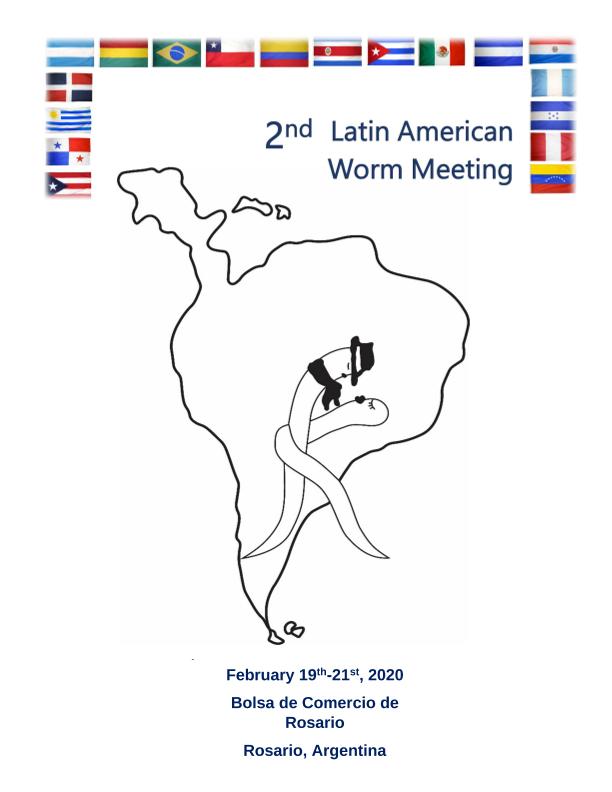Mostrar el registro sencillo del ítem
dc.contributor.author
Veuthey, Tania Vanesa

dc.contributor.author
Giunti, Sebastián

dc.contributor.author
de Rosa, Maria Jose

dc.contributor.author
Alkema, Mark J.
dc.contributor.author
Rayes, Diego Hernán

dc.date.available
2024-03-06T11:39:38Z
dc.date.issued
2020
dc.identifier.citation
The flight response induces the release of an insulin-like peptide from the intestine to inhibit cytoprotective mechanism in C. elegans; 2 nd Latin American Worm Meeting; Argentina; 2020; 30-31
dc.identifier.uri
http://hdl.handle.net/11336/229463
dc.description.abstract
The perpetuation of the flight response inhibits defensive cytoprotective mechanisms, leading to reduced resistance to environmental stressors and shorter lifespan. We recently shown that, in C. elegans, the flight response induces neuronal release of Tyramine (TA), which stimulates the intestinal adrenergic-like receptor TYRA-3. This leads to DAF-2/Insulin/IGF-1 pathway activation and inhibition of cytoprotective mechanisms in intestine and other tissues. However, the signals that bridge intestinal TYRA-3 stimulation with DAF-2 insulin receptor activation in other tissues remain unknown. C. elegans genome encodes 40 Insulin-like peptides (ILPs) that bind to DAF2, 28 of them expressed in the intestine. We test the resistance to environmental stressors (oxidative and thermal stress) silencing individual intestinal ILPs by RNAi. We found that silencing ins-3 improves stress resistance. In contrast to control, exogenous TA addition does not impair stress resistance in ins-3-silenced animals. Moreover, double-null mutants of ins-3 and TA are as resistant to environmental stress as single mutants. This suggests that tyramine and INS-3 act in the same pathway. Since ins-3 is also expressed in neurons, we performed tissue-specific rescues of ins-3 in neuron and intestine to assess the tissue where ins-3 is relevant for controlling stress resistance. Only intestinal ins-3 restores the resistance to wild-type levels. Moreover, stress resistance of ins-3 null-mutants is mediated, at least partially, by DAF-16/FOXO. We propose that intestinal activation of TYRA-3 by the escape neurohormone TA leads to INS-3 release which acts as endocrine, autocrine and/or paracrine signal to activate DAF-2 in the intestine and distal tissues. Given the high degree of conservation of fundamental mechanisms among species, this study can contribute to understanding molecular pathways and cellular communication involved in neural regulation of stress response in multicellular organisms
dc.format
application/pdf
dc.language.iso
eng
dc.publisher
Latin America.Worm Meeting
dc.rights
info:eu-repo/semantics/openAccess
dc.rights.uri
https://creativecommons.org/licenses/by-nc-sa/2.5/ar/
dc.subject
tyramine
dc.subject
Stress
dc.subject
ILPs
dc.subject
Resistance
dc.subject.classification
Otras Ciencias Naturales y Exactas

dc.subject.classification
Otras Ciencias Naturales y Exactas

dc.subject.classification
CIENCIAS NATURALES Y EXACTAS

dc.title
The flight response induces the release of an insulin-like peptide from the intestine to inhibit cytoprotective mechanism in C. elegans
dc.type
info:eu-repo/semantics/publishedVersion
dc.type
info:eu-repo/semantics/conferenceObject
dc.type
info:ar-repo/semantics/documento de conferencia
dc.date.updated
2024-02-22T14:34:51Z
dc.journal.pagination
30-31
dc.journal.pais
Argentina

dc.journal.ciudad
Rosario
dc.description.fil
Fil: Veuthey, Tania Vanesa. Consejo Nacional de Investigaciones Científicas y Técnicas. Centro Científico Tecnológico Conicet - Bahía Blanca. Instituto de Investigaciones Bioquímicas de Bahía Blanca. Universidad Nacional del Sur. Instituto de Investigaciones Bioquímicas de Bahía Blanca; Argentina. Universidad Nacional del Sur. Departamento de Biología, Bioquímica y Farmacia; Argentina
dc.description.fil
Fil: Giunti, Sebastián. Consejo Nacional de Investigaciones Científicas y Técnicas. Centro Científico Tecnológico Conicet - Bahía Blanca. Instituto de Investigaciones Bioquímicas de Bahía Blanca. Universidad Nacional del Sur. Instituto de Investigaciones Bioquímicas de Bahía Blanca; Argentina. Universidad Nacional del Sur. Departamento de Biología, Bioquímica y Farmacia; Argentina
dc.description.fil
Fil: de Rosa, Maria Jose. Consejo Nacional de Investigaciones Científicas y Técnicas. Centro Científico Tecnológico Conicet - Bahía Blanca. Instituto de Investigaciones Bioquímicas de Bahía Blanca. Universidad Nacional del Sur. Instituto de Investigaciones Bioquímicas de Bahía Blanca; Argentina. Universidad Nacional del Sur. Departamento de Biología, Bioquímica y Farmacia; Argentina
dc.description.fil
Fil: Alkema, Mark J.. University Of Massachussets. Medical School. Department Of Neurobiology; Estados Unidos
dc.description.fil
Fil: Rayes, Diego Hernán. Consejo Nacional de Investigaciones Científicas y Técnicas. Centro Científico Tecnológico Conicet - Bahía Blanca. Instituto de Investigaciones Bioquímicas de Bahía Blanca. Universidad Nacional del Sur. Instituto de Investigaciones Bioquímicas de Bahía Blanca; Argentina. Universidad Nacional del Sur. Departamento de Biología, Bioquímica y Farmacia; Argentina
dc.relation.alternativeid
info:eu-repo/semantics/altIdentifier/url/https://lawm2020.webnode.es/abstract-submission/
dc.conicet.rol
Autor

dc.conicet.rol
Autor

dc.conicet.rol
Autor

dc.conicet.rol
Autor

dc.conicet.rol
Autor

dc.coverage
Internacional
dc.type.subtype
Congreso
dc.description.nombreEvento
2 nd Latin American Worm Meeting
dc.date.evento
2020-02-19
dc.description.paisEvento
Argentina

dc.type.publicacion
Book
dc.description.institucionOrganizadora
Second Latin American Worm meeting
dc.source.libro
Libro de Resumenes Segundo Latin America Worm Meeting
dc.date.eventoHasta
2020-02-21
dc.type
Congreso
Archivos asociados
